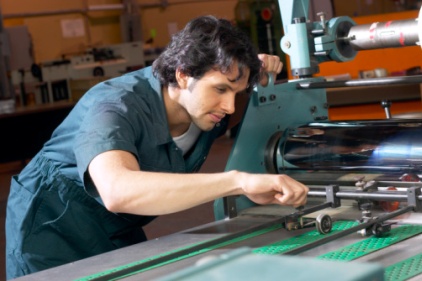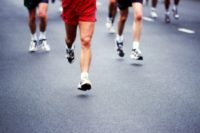 This article is re-posted with permission from AIHA and The Synergist magazine.
This article is re-posted with permission from AIHA and The Synergist magazine.
In an address at AIHce 2014 + Stewardship on June 3, Karen Messing, PhD, recipient of AIHA’s 2014 William P. Yant Award, described the effects of sitting versus standing on men and women who perform various types of work. Messing, who earned her doctorate in biology at McGill University in Montreal, Canada, and is professor emerita in the department of biological sciences at the University of Quebec at Montreal, challenged the audience to consider whether too much standing could be problematic to worker health.
Still standing
In 1989, Messing and her fellow researchers were asked by a female supermarket checkout clerk to determine whether her job could be performed seated, as opposed to standing. Messing and her colleagues studied the job, found out it could be done seated and the clerk won her case. However, 25 years later, supermarket checkout clerks and several other types of retail workers are still standing.
“In North America, 45 percent of employees work standing for more than three quarters of their work day and 40 percent of these workers cannot sit at will,” said Messing, the author of over 130 peer-reviewed articles. “Research shows that too much sitting is detrimental to worker health since it is associated with heart disease, obesity and diabetes. So scientists think that standing while working is better, but too much of it has been linked to problems as well.”
Prolonged standing can lead to...
According to Messing, research indicates that prolonged standing can lead to varicose veins, cardiovascular problems such as carotid atherosclerosis, and musculoskeletal disorders (MSDs) such as orthostatic intolerance and pain in the back and lower limbs.
What prevents North American supermarket cashiers, bank tellers and sales staff from being given access to seats? And why aren’t they insisting on seats in their workplaces? According to Messing and her colleagues’ field research findings, there are several obstacles to a better working posture for people.
“A lot of it has to do with employer and employee attitudes and perceptions. When we interviewed 30 workers and asked them why they couldn’t sit at work, they’d tell us that their employers or clients would think they were lazy. Or they’d tell us it would be hard to keep alert at work if they weren’t standing or there wasn’t enough room for a seat.”
Messing, who co-founded the university-union partnership L’invisible qui fait mal (The Invisible that Hurts) to address female workers' needs in researching occupational health and safety risks, also explained that during field studies, ergonomists learn a lot about gender (social roles) and sex (biological differences) that can be important when generating and testing hypotheses about the mechanisms linking workplace exposures to health outcomes.
“The Quebec Health and Social Survey from 2000 showed us that there is a difference in how women and men stand at work. Women who stand in a fixed position have 3.6 times more pain in the lower extremities than women who sit but are free to stand at work. For men, it’s 3.5 times more pain.”
According to Messing, there are several mechanisms underlying sex differences in work-related MSDs such as joint flexibility, power (normalized to perceived work intensity), muscle activity, fatigue resistance, and movement variability.
“Sometimes what appear to be gender differences can also be attributed to differences in exposures. Basically, there are no fixed regulations on sitting versus standing that will fit both men and women. Researchers and ergonomists have to think about the different biological properties that each sex has,” said Messing.
Messing concluded by emphasizing that scientists and ergonomists have much work to do when it comes to solving the sitting-versus-standing at work debate.
“Standing can be walking, leaning, crouching, stretching, carrying or bending. Researchers performing ergonomic studies need to come up with a clear definition of the word ‘standing’ that can they use in population-based studies and questionnaires to truly understand its effects. We need to find a right mixture of sitting, standing and walking for workers to remain truly healthy.”


